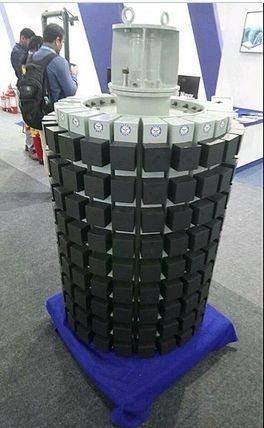Piezo as noted in all formal sources (dictionaries, Wiki, etc) is a Greek root meaning pressure or push. It's combined with some other words to make new nouns and adjectives. For example a piezometer is a pressure meter; piezoresistor is an electronic component which changes its resistance when exposed to stress; and piezoelectric is an adjective describing a property of some special solid materials that can convert some of the energy from an applied pressure into electric charge.
What kind of materials? Well, a whole lot more than you might think. Although, for our purposes, the most important materials are man-made ceramics that happen to be really active (piezoceramics!). There are a lot of natural materials that exhibit piezoelectric properties, e.g. quartz crystal and even bone. We'll talk those up in a separate blog.
Piezo (the word) has more and more turned into a noun, as in "THE piezo." In common use, it could mean anything from a simple piezoceramic disk to a whole assembled component or device that has some essential piezoelectric material as an integral part. Oddly enough, 50-odd years ago there appeared in the 1967 Random House Dictionary the word piezoid, a noun, with the definition "a completed crystal blank, esp. after attachment of electrodes to the faces" which is pretty close to the current piezo in meaning.
Here we'll take a generic applications perspective and use "piezo" for a device, and we'll say that "piezo material" is a solid which, when deformed by applied stress, produces usable electric charge, and when subjected to applied electric field, deforms itself. A medium in which there is coupling, i.e. free reversible interchange, of electric and elastic energy. "Fascinating Captain," as Spock would say.
This post will take you through:
- What Does a Piezo Look Like?
- What is the Magic of Piezos?
- How Much Can a Piezo Move?
- How Much Electrical Power Can a Piezo Generate?
- How Sensitive is It?
What does a Piezo look like?
Rather than beat you up with a lot of descriptions, here is a really instructive set of photos with a little description about what each one does. You can scroll through, or click directly on the table of contents:
1. Block of Piezo
First: this is a block of piezo as it appears right after it's fired. It's a ceramic, fired in a kiln (like a flowerpot), so it's brittle, shatters when dropped, and it's not very flexible. At this stage it does not exhibit piezoelectric properties.
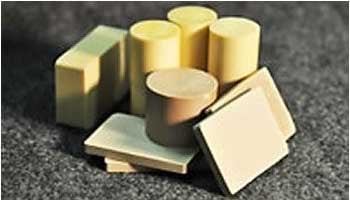 Source: Omega Piezo
Source: Omega Piezo
2. Disk of Piezo
A simple disk of piezo with silver electrodes on both major faces. This is perhaps the most commonly appearing form applied in medical ultrasound transducers (fetal heart rate monitors, some imaging, physical therapy devices, etc), ultrasonic cleaners, NDT (non destructive testing) probes, etc. In order to get to this usable state the raw fired piezo has to be cut to shape, have the electrodes applied to its surface, and THEN it has to be polarized by applying a very high voltage to its electrodes.
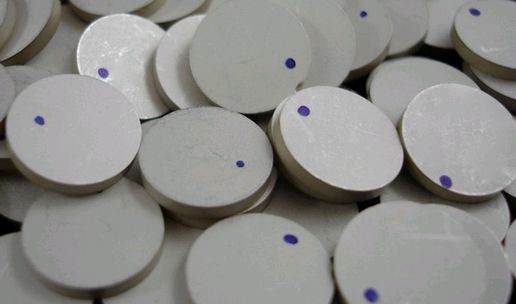
3. Dental Plaque Scaler
The tooth plaque scaler that your hygienist uses looks like this inside. The piezoceramic parts are little rings. They are stacked 4, and sometimes 6, deep and wired up so that all of their individual motions work in unison, adding up to much larger motion and power. The light weight scaling tip — the part that actually touches your teeth — screws onto the threaded tip and is set into "wild" vibration by the piezo’s motion.
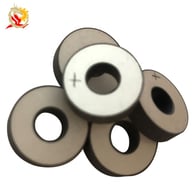
|
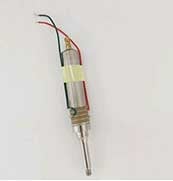
|
4. Watch Beeper
Did you ever wonder how the sound of the watch beeper gets out of the watch without any holes? OK, so maybe not. The answer is that there is a little disk or square of piezo material glued to the inside of the watch back. It gets tickled by a high frequency signal from the watch’s electronics and forces the entire back of the watch to ripple like a bed sheet. So actually the sound doesn’t have to get out, it’s already out!

5. Piezo Buzzers and Alarms
The piezo buzzer is a watch beeper on steroids. Once exotic and pricey, it is now a useful and ubiquitous commodity. The piezo element itself consists of nothing more than a thin disk of piezo bonded to a thin disk of metal (typically brass, but sometimes stainless steel). It is often packaged in a plastic case with an integral (but simple!) drive circuit that converts applied DC voltage to an AC voltage that’s exactly at the right frequency to make it loud. As you probably know it does not buzz. It produces a high audio tone in the 2 – 3 kHz region. It’s a watch beeper on steroids. It puts the “alarm” in “smoke alarm” and there is one hiding somewhere in almost every desktop and laptop computer.
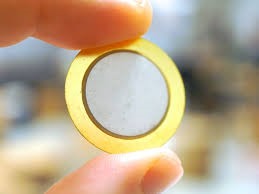 |
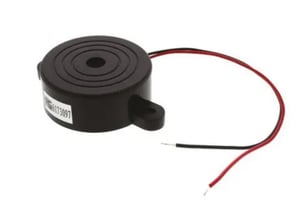 |
6. Submarine Sonar
Big and heavy! There are many types of sonar, but the unit that goes in the nose of a submarine is an example of how piezo technology can be scaled upward into very high power applications. The construction of the units shown are typical of bow sonar arrays. Each one of those square facets you see is driven by a piezo module: a stack of large diameter piezo rings put together and wired similarly to the dental scaler. The modules can be used to build up assemblies of any size and geometry (cylindrical, spherical, special contoured). They also offer the advantage of being individually addressed, allowing for the use of timing to steer transmitted beams or for detection from preferred directions.
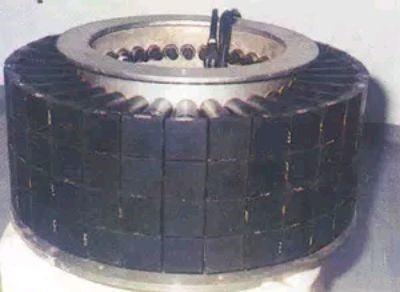
|
|
|
7. Barbecue Grill Igniters
Push button barbecue grill igniters use piezoceramic elements. For that application it is only necessary to apply a high force to the crystal for a very short period of time — the time it takes for a spark to jump. Snap! So to do that, the push button cocks a spring, and when it releases it propels a small mass (carefully chosen!) to a high velocity. The mass hits a little piezo cylinder and the resultant impact force stresses the piezo creating a high voltage pulse that jumps a spark gap, igniting the propane. This arrangement, which could be called a ballistic piezo generator, was the subject of US Patent in which the high voltage pulse needed for portable X-Ray device was provided by firing a 22 caliber bullet into a disposable piezo (see US3217164A and similar).
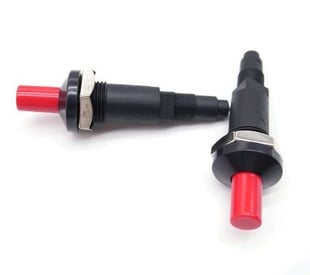
|
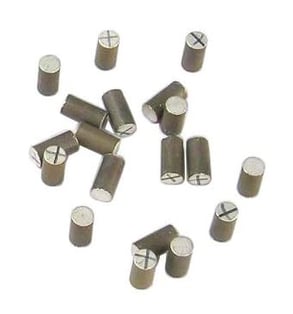
|
8. Liquid Level Detectors
Vibratory liquid level sensors work by driving a tuning fork arrangement into constant vibration – until the tines touch liquid which damps down the vibration to nearly zero and the resultant loss of motion is detected. The low power consumption and high sensitivity and fast reaction time of piezo sensors make them ideal for this application. Ultrasonic liquid level sensors work just like submarine sonar, except they are typically built for air use and they are much smaller and lower powered — easily running on batteries if need be. They send out a very short pulse train of ultrasonic frequency sound, then listen (often with the same transducer) for a return echo from the reflection off the liquid surface. The time of transit determines how far the liquid surface is from the detector.
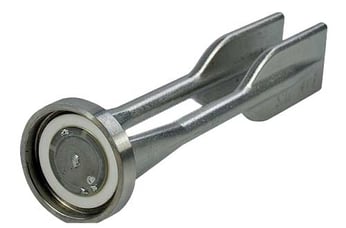
|
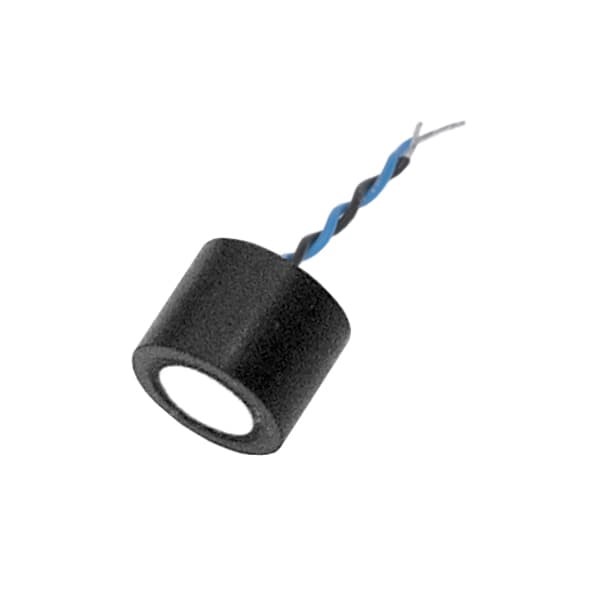
|
Piezoceramics strain gauges are extraordinarily sensitive. They can readily detect and quantify the amount of compression on the surface of a rod of steel (say .5 inch x .5 inch square and 1 inch long) which is compressed only by your thumb and forefinger. A simple slab of piezoceramic can be given a "wrap-around" electrode allowing it to be conveniently bonded intimately to any surface with any adhesive. Any bending, passing shock wave, or steady state vibration will register as a voltage signal proportional to the "stretch" experienced by the sensor. Various laminates of thin layer piezoceramics are manufactured for applications involving harsh or damp environments. As a bonus, they offer more convenient signal connections via solder contacts or connectors.
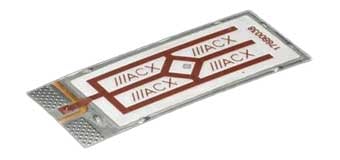
|

|
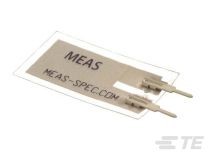
|

|
A simple piezo disk placed at the bottom of a puddle of water facing upward and driven at its resonant frequency by a special power circuit will transmit acoustic waves to the surface of the water causing it to ripple. Typically, the operating frequency of these disks is in the megahertz region (1,000,000’s of cycles per sec). When the acoustic power reaches a certain threshold, the rippling on the surface becomes so violent that little droplets actually get ejected from the surface into the air above the water. The size of the droplet is related to the frequency of the piezo disk. The higher the frequency, the tinier the drop. So by picking the piezo crystal frequency, the drop size can be tailored small enough to ensure that it completely evaporates before it falls to the floor.
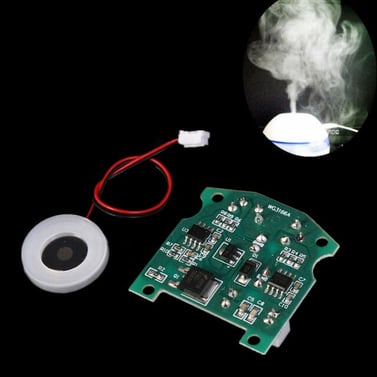
11. Vibrational Energy Harvesters
Waste vibration energy from various equipment from farms to factories can be transformed into usable electrical power using piezoceramic harvesters. The typical arrangement involves anchoring a cantilevered two-layer piezo (called a “bimorph”) to the target equipment. Sympathetic resonance of the piezo generates an AC voltage which is converted via an electrical circuit to DC and stored in a battery for use "on demand." Waste energy harvesters permit both the powering of monitoring devices and also wireless communication between them. This opens up the opportunity for robust "no battery required" high reliability networks for controls and alerts in industrial (factory) and transportation (trains, trucks, airlines) settings. This type of network is sometimes referred to as the “Internet of Things” (IoT)

|
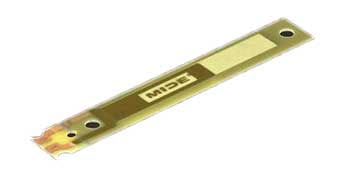
|
12. Valves
Piezo valves have been commercially available and in use in certain niche areas since at least the 1970s. The more common variety also uses the two layer piezo laminate (a "bimorph") which is anchored at one end with an elastomer pad mounted on the moving end. Voltage applied to the piezo causes one of the piezo layers to contract while the other expands, resulting in a bending action that forces the elastomer to press on the orifice of the valve like a stopper. A second type utilized for high pressure liquid applications (such as fuel injection) is made with a solid rod of piezoceramic consisting of hundreds of layers. In both cases the short response time and low power consumption of the piezos compared to their magnetic competitors is what makes them the kings of their niches.
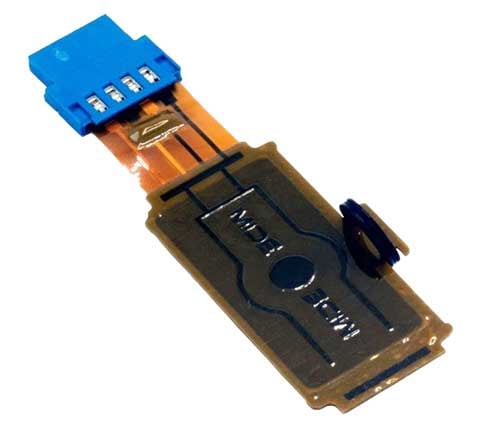
What is the magic of piezoelectricity?
The magic of piezoelectricity owes its existence to a quantum effect. Just take as an example the piezoelectric compound "lead titanate" PbTiO3. If you stretch your mind down to the level of the simplest atomic structure that can exhibit the piezoelectric effect, it’s a box made of atoms. At the corners of the box are 8 "anchor" lead (Pb) atoms. Near the center of each of the six faces of that box are 6 oxygen (O) atoms. These 14 atoms make a cage, and it completely traps one single titanium (Ti) atom. In the fuzzy world of quantum mechanics, that titanium atom can lodge in only one of several stable energy states inside the cage, each of which is associated with a "position" (fuzzy) within the box. Here’s the nut: even though the titanium can’t escape, when it does settle in any one of its quantum "positions," the whole cage shape warps mechanically to accommodate it. The cage remains charge neutral, but it has an internal dipole electric field that balances the titanium position offset.
When the cage sees an electric field (externally applied voltage), the balance is altered, and the frame of the box shifts slightly (shrinks/expands). When the frame of the box is mechanically stressed (by pressure), it distorts and the Ti atom position shifts (charge "flow").
The geometry of the crystal and its electrical state are inextricably coupled.
You might imagine that as the temperature of a piezoelectric transducer goes down to absolute zero ( 0 degrees Kelvin), that its magic gets frozen just like everything else. But the magic remains. It’s based on electric field effects, and electric fields do not disappear EVEN at absolute zero. Generally the macroscopic properties of piezoceramics do shift as the temperature drops. Motion per volt and volts per motion change to be sure, but they don’t disappear.
How much can a piezo move?
You could spend a whole career devising new and different ways to answer that question (I know because I did just that!). The answer to that question always lies partly in how big the piezo is (mm, inches, feet), and partly with whatever it is physically connected to (as in fastened down) or coupled to (as in air or water), and that’s where the variety of answers come from. For now, here’ a few take-home bullets to get started:
- Vibrational actuators (the piezo buzzer elements, ultrasonic transducers, piezo fans, etc) move a lot more, but they exhibit a trade-off between how much they move and their operating frequency. If you multiply their "visible" motion amplitude (the "blur" in meters) times twice their frequency (cycles per second), you get their average surface velocity – and it almost always equals between 1 meter/sec for run-of-the-mill actuators and 5 meter/sec for exotic designs. Some piezo fans, for instance, operate with motions of 1.25 inches (~.032 meter) at AC line frequency of 60 Hz, so their tip speed averages 3.84 m/sec
- Small actuators that you can hold in your hand and use to move little things around (i.e. "on demand") have maximum motion strokes from .001 inch to .080 inch. Generally, the longer the stroke, the weaker the force the actuator is capable of exerting. By contrast to vibrational actuators, these "on demand" types generally have maximum velocities of around 1 meter/sec.
- Some applications (like micro-manipulators for working with cells under a microscope) don’t call for MORE motion, they call for LESS BUT MORE ACCURATE motion. Piezo actuators really shine in this realm because it’s actually easy to make a solid bar of piezo that moves 10 microns (.000010 meter) but takes 200 volts or more to power it. Since it is very easy to produce control voltages that can hold an absolute value to within 1 millivolt (.001 Volt), a piezo actuator like that can be commanded to go anywhere in its range to with in 1 part in 200000, or 50 pico meters (.000000000050 meters)! This type of piezo actuator is used in the control of the lasers used in eye surgeries and also in astronomical mirror image correction.
How much electrical power can a piezo generate?
An important fact to remember regarding piezo generators is that for a given patch of piezo the amount of power that can be extracted from it is proportional to the product STRESS x FREQUENCY. With low frequency applications (like walking, breathing, hand squeezes), the power output is really low even at maximum stresses. But if the piezo were set somewhere in the high intensity ultrasonic noise region behind a jet engine, it can put out about as much power per weight as a car alternator.
At present, commercially available piezoelectric power generators exist to harvest small amounts of electrical energy (microwatts to milliwatts) from some piece of equipment they are attached to. That power gets used to run sensors, take data, and transmit data wirelessly. There’s a niche in the Internet of Things (IoT) universe for this type of power source because its reliability is very high and its service life essentially infinite.
How sensitive is a piezo?
Short answer: VERY SENSITIVE.
In practice, piezo parts are utilized to sense really tiny pressure changes in their environment or very slight surface strains on objects to which they are bonded. Unlike actuator designs, sensor designs are not very complicated. Just put the piezo in harms way and it will send out a little voltage in response to ANYTHING that disturbs it. And it does not need a power supply to keep it alive.
A classic sound sensor employed by nations listening for undersea activity is the "sonobuoy" which contained a few piezo microphones designed especially for listening to the faint sounds of distant passing undersea craft.
As a surface strain detector, it is easily 10x the sensitivity of metal foil strain gauges and operates on far, far less power. You might wonder why standard foil strain gauges are still used? Good question. Piezo sensors have an inherent low frequency limit below which the output voltages cannot be trusted to mirror the strain in the material, but instead are indicating a mix of strain and internal temperature fluctuations. So for monitoring the weight of something over time, piezos are off the list! But for very tiny surface strain measurements down to perhaps 1/10 Hz and upward into the Gigahertz, piezos are fantastic.
That’s a Piezo!
So now you know what a piezo looks like, and you’ve got factoids to go with your piezoids.
Subscribe to our blog for more educational posts and check out my Introduction to Piezoelectric Transducers Handbook for a deeper dive into piezos. We invite you to continue your exploration and experimentation here at Piezo.com!
Rob Carter
Principal Mechanical Engineer (Piezoelectrics) at Piezo.com


